Michael Rennie was ill
The day the Earth stood still
But he told us where we stand
And Flash Gordon was there
In silver underwear
Claude Rains was The Invisible Man
Then something went wrong
For Fay Wray and King Kong
They got caught in a celluloid jam
Then at a deadly pace
It came from outer Space
And this is how the message ran
Science fiction (ooh-ooh-ooh) double feature
Doctor X (ooh-ooh-ooh) will build a creature
See androids fighting (ooh-ooh-ooh) Brad and Janet
Anne Francis stars in (ooh-ooh-ooh) Forbidden Planet
Wo-oh-oh-oh-oh-oh
At the late night, double feature, picture show
I knew Leo G. Carroll
Was over a barrel
When Tarantula took to the hills
And I really got hot
When I saw Janette Scott
Fight a Triffid that spits poison and kills
Dana Andrews said prunes
Gave him the runes
And passing them used lots of skills
But when worlds collide
Said George Pal to his bride
I'm gonna give you some terrible thrills
Like a
Science fiction (ooh-ooh-ooh) double feature
Doctor X (ooh-ooh-ooh) will build a creature
See androids fighting (ooh-ooh-ooh) Brad and Janet
Anne Francis stars in (ooh-ooh-ooh) Forbidden Planet
Wo-oh-oh-oh-oh-oh
At the late night, double feature, picture show
I wanna go, oh-oh-oh-oh
To the late night, double feature, picture show
By R.K.O., wo-oh-oh-oh
To the late night, double feature, picture show
In the back row, oh-oh-oh-oh
To the late night, double feature, picture show
Science Fiction – Double Feature by Richard O’Brien from The Rocky Horror Show
This is where my interest in books shifts from the general to the genre – from the familiar to the esoteric.
I cannot remember when I started to read science fiction but I do recall some fragments of my reading a boys comic magazine “Eagle” which was popular in the 1950’s and which contained a cover series strips about the adventures of Dan Dare – Pilot of the Future.
About the same time there was a radio series entitled “Journey into Space” which featured space pilot Jett Morgan as its lead character. And around this time I can across an author named Arthur C. Clarke and the first book of his that I read – a mysterious piece of work and rather impenetrable in some respects to a single-figure aged boy although all became clear on later re-reads – “Childhood’s End.” And of course there was H.G. Wells – “The Time Machine”, “War of the Worlds”, “The Invisible Man” and his short stories along with Conan Doyles adventures of Professor Challenger in “The Lost World”, “The Poison Belt”, “The Land of the Mists”, “The Disintegration Machine” and “When the World Screamed”
At the same time there were the B-Grade science fiction movies that are now classics – “The Day the Earth Stood Still”, “Forbidden Planet” – and others that the film censor had deemed were too scary or challenging for one of my age and so they had restricted certificates – R16 and that sort of thing.
I do recall in 1960 George Pal’s direction of the “The Time Machine” which starred Rod Taylor. It had just been released, had an R13 certificate and was on at a matinee at the Civic Theatre. It was the beginning of school holidays. School went down at 1:00 and I caught the 1:09 train to the city and briskly walked from Auckland Station to the Civic making it in time for the show at 2:00 pm – and I qualified having just turned 13. It was my first science fiction movie.
Before this I had discovered Tolkien and was familiar with imaginative writing so the field of science fiction and fantasy merged. Just up from the Civic Theatre was a bookshop called Civic Books – now long gone – which featured science fiction paperbacks and I recall discovering the works of Andre Norton and others at that establishment.
It was an exciting time to be reading in the SF genre. Isaac Asimov’s “Foundation Series” had been written and his stories about statutory interpretation were brilliant.
Just a minute – I thought we were talking about science fiction. Well we were and still are. But Asimov’s robot stories are about statutory interpretation. In his books Asimov devised the Three Laws of Robotics. They were first introduced in 1942 and featured in his first collection of robot stories I, Robot published in 1950. He followed that collection up with The Rest of the Robots in 1960
The Three Laws are these:
The First Law: A robot may not injure a human being or, through inaction, allow a human being to come to harm.
The Second Law: A robot must obey the orders given it by human beings except where such orders would conflict with the First Law.
The Third Law: A robot must protect its own existence as long as such protection does not conflict with the First or Second Law.
So far so good. But the theme in most if not all of the robot stories is how the Laws may be circumvented or applied. Many of Asimov's robot-focused stories involve robots behaving in unusual and counter-intuitive ways as an unintended consequence of how the robot applies the Three Laws to the situation in which it finds itself.
There were other stories where robots featured and they made an appearance in some of his Foundation prequels and sequels.
Arthur C Clarke continued to amaze with his short stories and I also discovered the writing of Robert A Heinlein who is still a favourite, especially his books Starship Troopers, Stranger in a Strange Land and his sequence of Lazarus Long stories. Heinlein also wrote some dystopian futures for the United States, suggesting the rise of a theocracy in Revolt in 2100. The premise was that at the height of America's secular decadence came Nehemiah Scudder, bearing the rod and the wrath of the Lord for those who opposed him, and the promise of earthly happiness and heavenly bliss for those who followed him...and America fell under an absolute religious dictatorship that was to last a hundred years. But nothing endures forever.
1968 saw the first Planet of the Apes movie with Charlton Heston – who can forget the line “take your stinking paws off me you damned dirty ape”
And then of course there was Stanley Kubrick’s masterpiece (with the screenplay by Arthur C Clarke based on his short story The Sentinel) 2001 – A Space Odyssey
I have written elsewhere about my discovery of Frank Herbert’s Dune and shortly after I came to that book I discovered the writings of the enfant terrible of science fiction, Harlan Ellison as well as the writing of a lovely lady named Anne McCaffrey who wrote the Dragonriders of Pern series and who, at a science fiction convention read aloud the short story The Ship Who Sang and when she finished there wasn’t a dry eye in the house.
I confess that I did read in other fields and genres of literature but SF (not SciFi) has frequently drawn me back. Part of the problem being at this end of the world was getting hold of the more esoteric titles in this already esoteric field. Tolkien and the fantasy writers had not become so mainstream that bookshops had their own sections. But there was a bookseller in Wellington named Rolf Huyser who had a mail order SF catalogue which was really extensive and any visit to Wellington had to allow for an hour or two at his physical bookshop.
There were also specialist shops overseas. Sydney has the Galaxy Bookshop in York St - part of Abbeys which is still going and Melbourne has Minotaur Entertainment. And that name probably tells us a bit about the direction that SF shops have followed. No longer are the shops just “book” shops but rather there is an element of many aspects of cult followings arising from TV, movies and games – both on and off line. Kings Comics in Clarence St in Sydney is Australia's most well-known comic book and pop culture specialty store. Recognised internationally, it retails the widest range of comic books and graphic novels in Australia, as well as a comprehensive range of current collectible merchandise. And this diversity characterizes the SF&F market.
And so to London where some online exploration revealed Forbidden Planet – about 10 minutes walk up Shaftesbury Ave from Piccadilly Circus.
Forbidden Planet has its origins in the 1956 movie of the same name. It was considered one of the great SF movies of the 1950’s despite the rather garish poster.
The characters and isolated setting have been compared to those in William Shakespeare's The Tempest, and the plot contains certain happenings analogous to the play, leading many to consider it a loose adaptation.
In the 23rd century, after more than a year's journey, the United Planets starship C-57D arrives at the distant planet Altair IV to determine the fate of the ship Bellerophon, sent there 20 years before. Dr. Edward Morbius, one of the original expedition's scientists, warns the ship not to land for safety reasons, but Commander John J. Adams ignores his warning. Morbius is the “Prospero” character who has had his intellect enhanced and who also has a dual nature in that his subconscious has created a “thing” that killed the original expedition members. One of the “characters” in the movie is Robbie the Robot whose physical appearance was adapted in the TV Series “Lost in Space” in the 1970’s. Towards the end of the movie Robby detects the “thing” approaching; Morbius commands Robby to kill it, but the robot knows it is Morbius and shuts down, being programmed to never kill a human. (Shades of Asimov’s Laws of Robotics) Morbius finally accepts the truth and confronts and disowns his other self, but is fatally injured by the creature as it vanishes.
The Forbidden Planet shop itself is one of is a chain of stores that sells science fiction and fantasy books, comics, toys, collectibles, and merchandise.
It was founded in 1976 by Nick Landau and Mike Lake, who were inspired by the 1956 film of the same name. The flagship store is located on Shaftesbury Avenue in London, and it is the largest and most famous of the chain.
The first Forbidden Planet store opened in Denmark Street in London in 1978, and it was the first store in the UK to specialize in sci-fi and fantasy products. It quickly became a popular destination for fans, writers, artists, and celebrities who shared a passion for the genre. Some of the famous visitors included George Lucas, Terry Pratchett, Neil Gaiman, Stephen King, and Stan Lee. The store also hosted many events, such as book signings, launches, and conventions, where fans could meet their idols and interact with each other.
In 1981, Forbidden Planet moved to a larger location on New Oxford Street, and in 1988, it expanded to a second store on Shaftesbury Avenue. The two stores operated independently until 1999, when they merged into one giant store on Shaftesbury Avenue, which is still the current location. The store covers two floors and has over 5,000 square feet of space. It has sections for books, comics, graphic novels, manga, DVDs, Blu-rays, games, toys, statues, clothing, accessories, and more. It also has a dedicated Doctor Who section, which features a life-size TARDIS and Dalek.
Forbidden Planet is not just a store, but also a museum, a gallery, and a hub for sci-fi and fantasy fans. It showcases a vast collection of rare and original items, such as props, costumes, posters, artwork, and memorabilia from various films, TV shows, books, and comics. Some of the highlights include a Stormtrooper helmet from Star Wars, a Cyberman head from Doctor Who, a Gollum statue from The Lord of the Rings, and a Batmobile from Batman. The store also displays a rotating selection of artwork from local and international artists, who often draw inspiration from the genre.
Forbidden Planet also hosts regular events, such as signings, talks, workshops, screenings, and quizzes, where fans can meet their favorite creators and celebrities, learn new skills, watch classic and new films, and test their knowledge. Some of the recent guests include J.K. Rowling, Benedict Cumberbatch, Tom Hiddleston, and Mark Hamill. The store also organizes special events for occasions such as Halloween, Christmas, and Free Comic Book Day, where it offers discounts, giveaways, and prizes. The store also has a loyal and friendly staff, who are knowledgeable and enthusiastic about the products and the genre.
Forbidden Planet has had a significant impact on the sci-fi and fantasy culture and community in the UK and beyond. It has been a pioneer and a leader in promoting and celebrating the genre, and it has influenced and inspired generations of fans and creators. It has also been a supporter and a partner of various charities, organizations, and initiatives that aim to improve the lives of people through the power of imagination and creativity. Some of the examples include Comic Relief, Children in Need, World Book Day, and Reading Agency.
Forbidden Planet has also been recognized and awarded for its achievements and contributions. It has won several awards, such as the Diamond Comic Distributors' Best Retailer Award, the Eagle Award for Favourite Comics-Related Retailer, and the SFX Award for Best Comic Store. It has also been featured and praised in various media outlets, such as BBC, The Guardian, The Times, and Time Out.
It has also been immortalized in pop culture, such as in the film Shaun of the Dead, where the main characters visit the store, and in the comic book The League of Extraordinary Gentlemen, where the store is depicted as a portal to other worlds.
Forbidden Planet is a paradise for sci-fi and fantasy fans, and it is a treasure for the culture and the community and well worth a visit – but allow plenty of time.


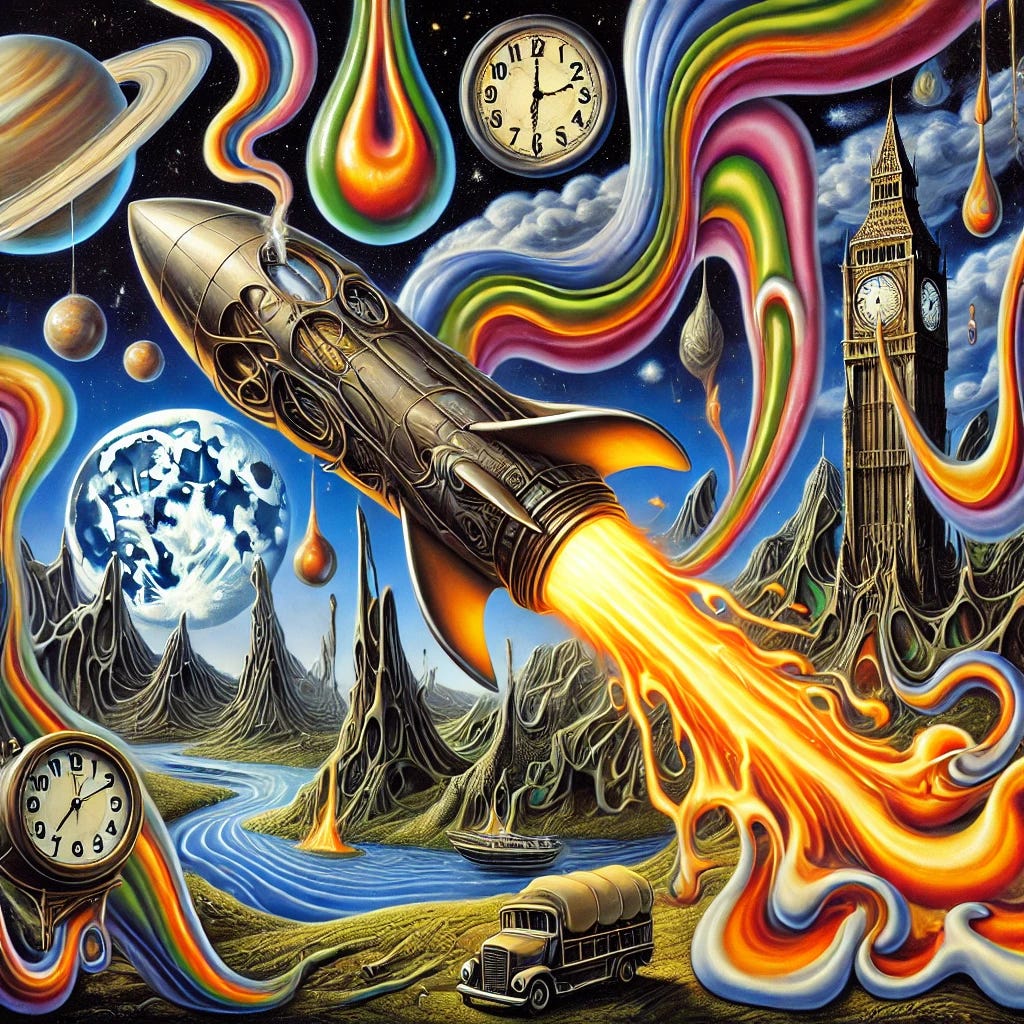

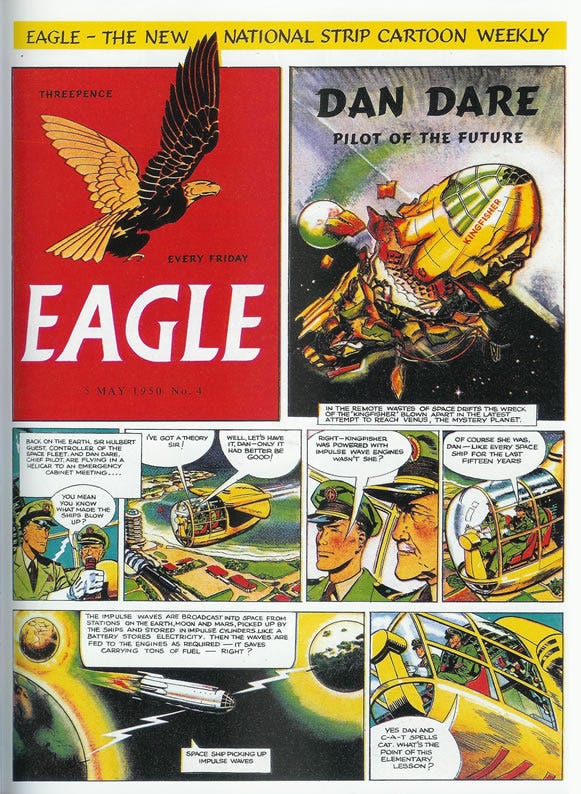
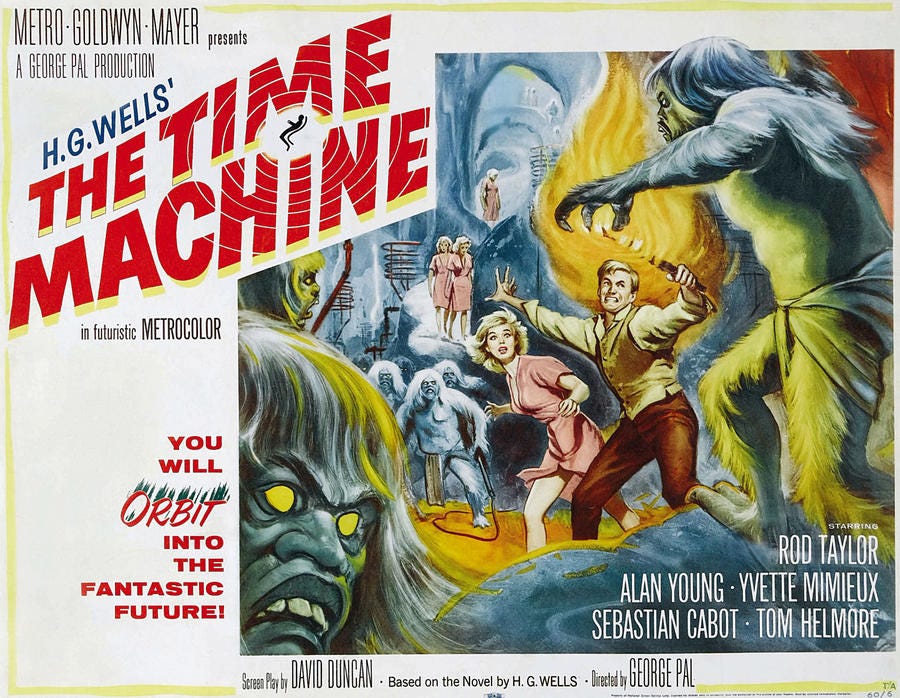

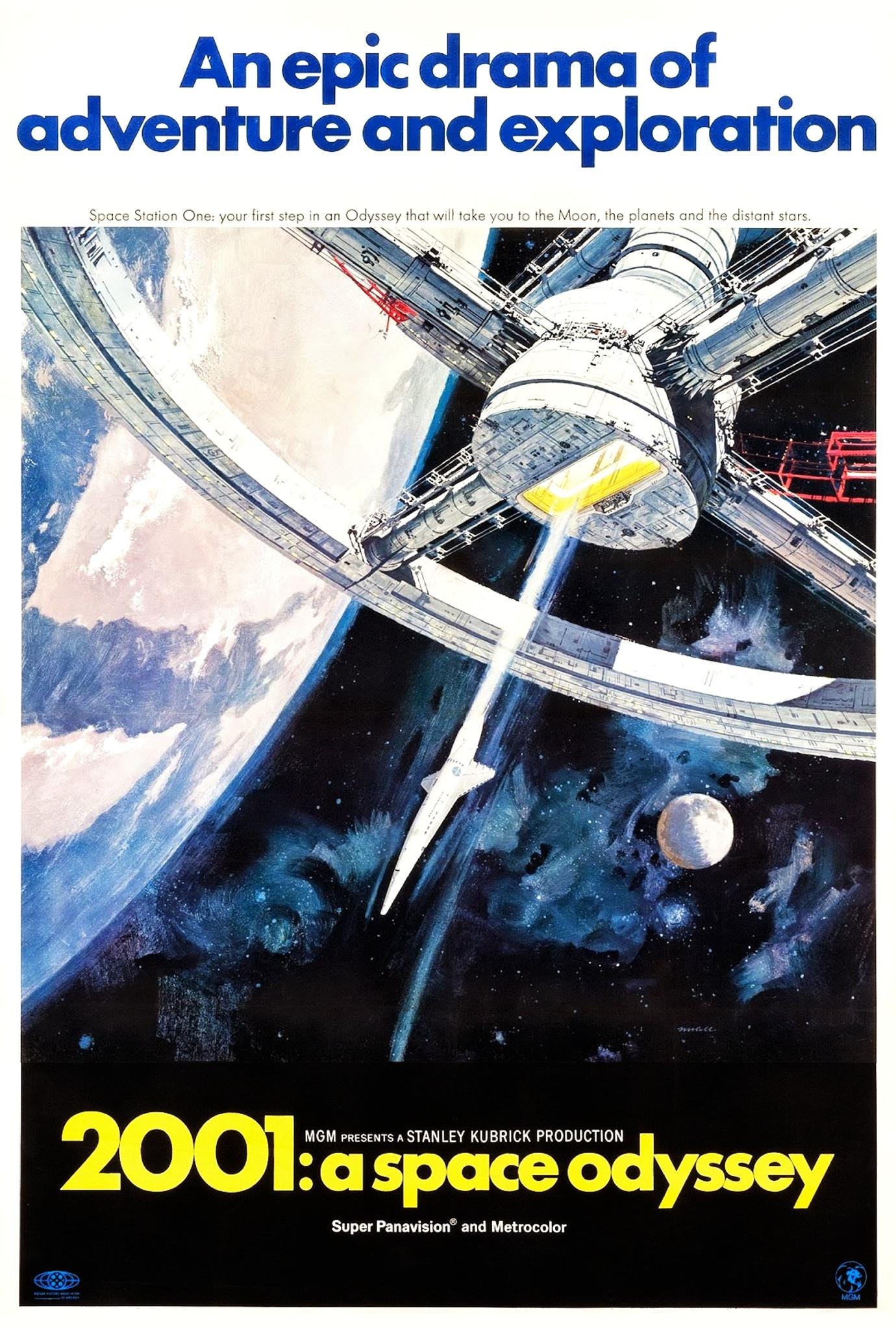
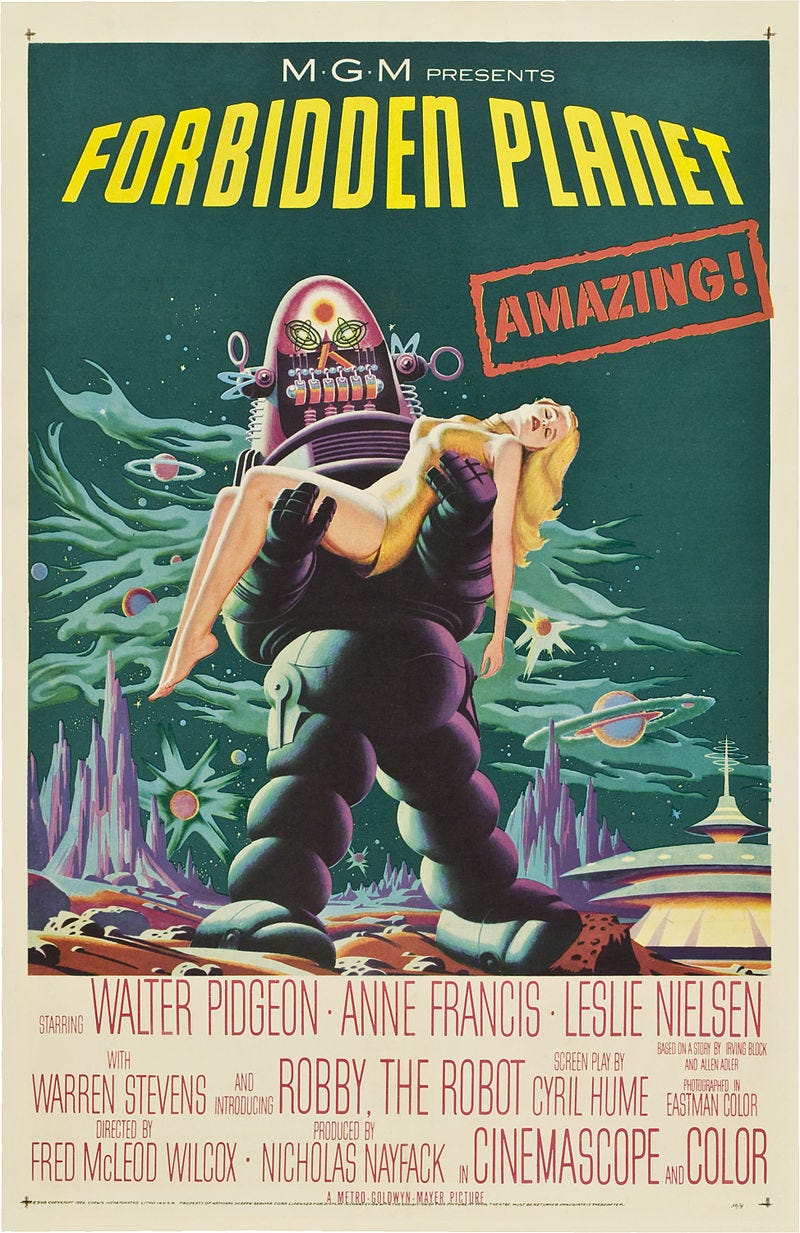




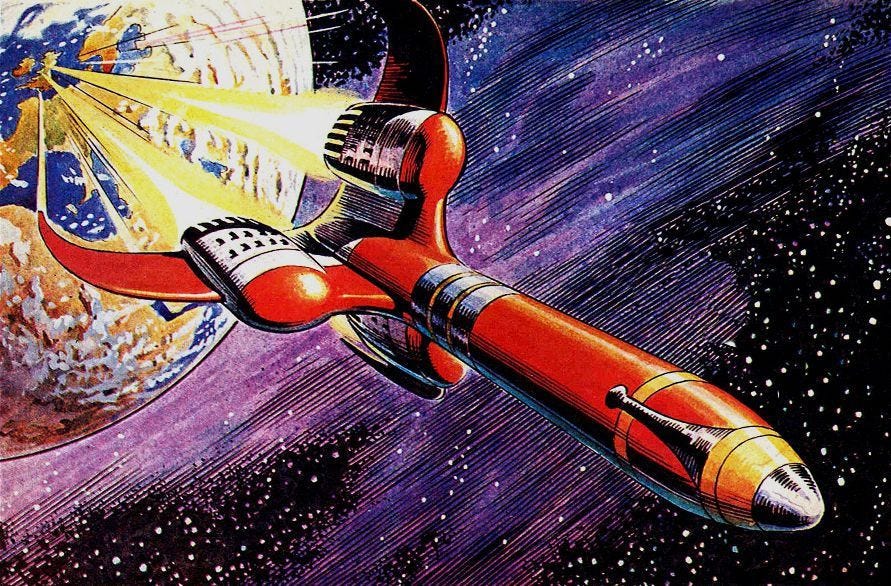
Enjoyed this thanks. The older bro is a fan too & I read some of his books/comics/mags, plus I would tag along at wknd flicks here in ChCh. I'm not a fan as such but I have certainly enjoyed the Dune series and Minority Report is a favourite flick, Bladerunner of course. We all remember seeing Kubrick's works. The 'lurid' posters were part of the appeal I thought David? Pulp Fiction & all that.
Interesting thanks. I'm not huge on science fiction but I like Jack Vance's take on it. In the short story collection of his that I partly read, the cynicism of the characters was huge; whether it was speculating on real estate on the moon or mining remote planets, they were exploring space for one reason only - to make a packet. No noble 'to go where no man has gone before' motives that's for sure.